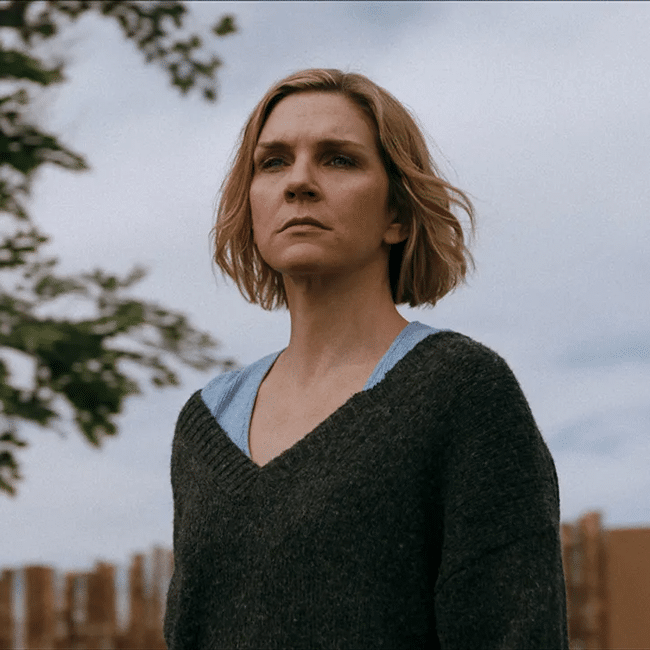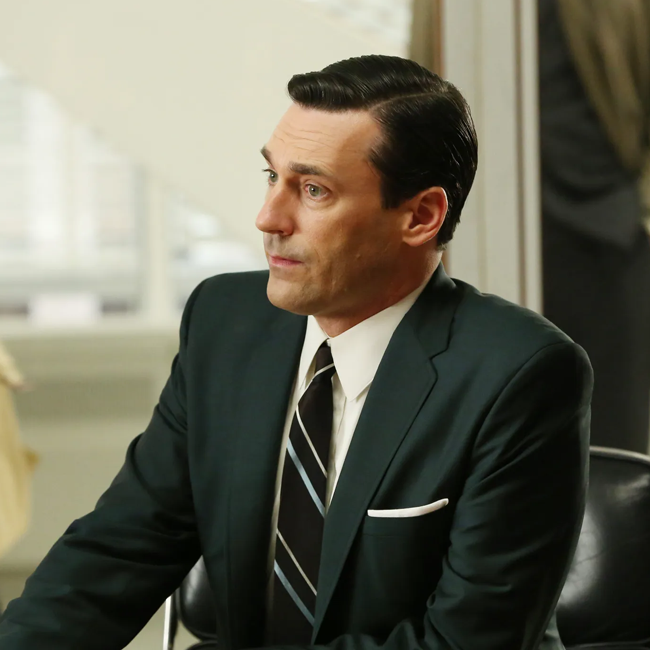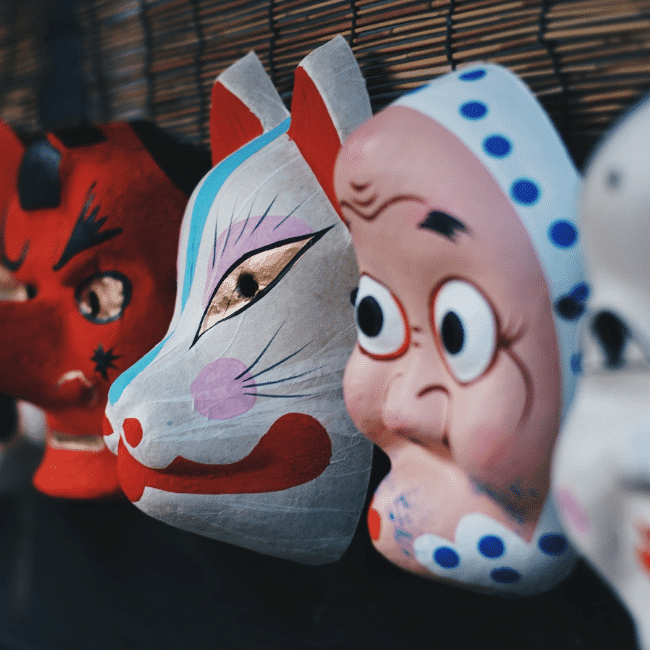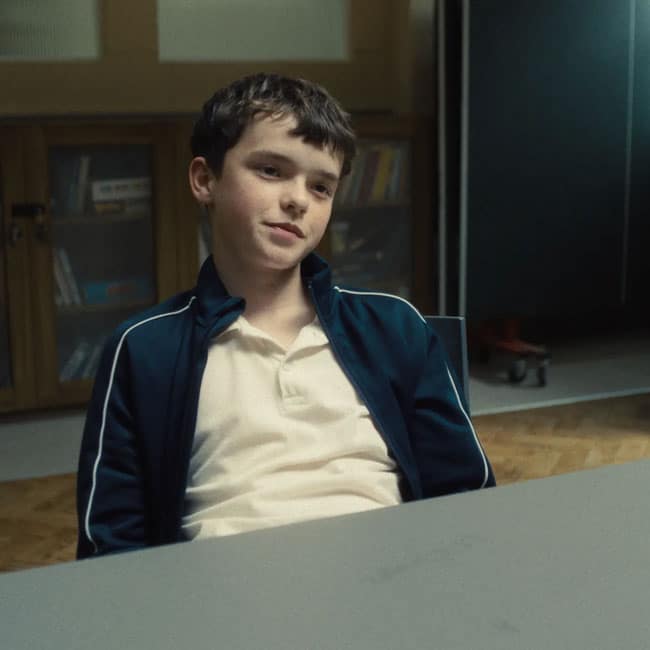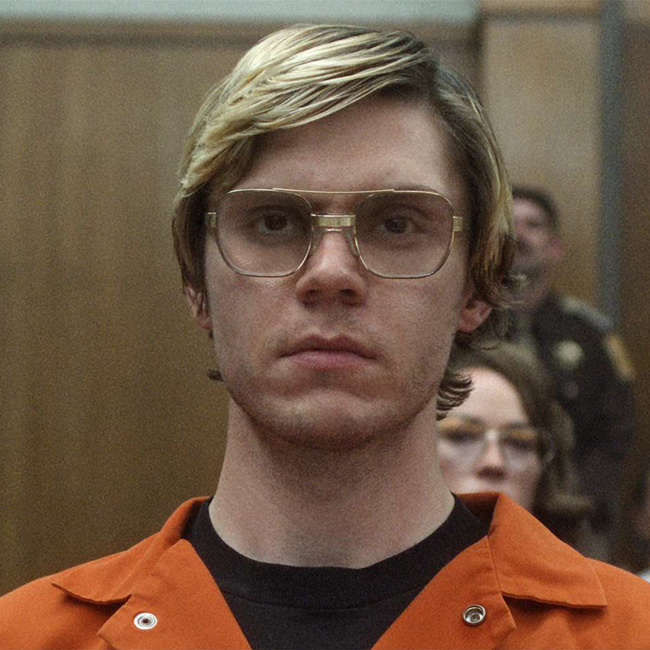Should we be afraid of consensus? Pluribus and the horrors of mainstream happiness
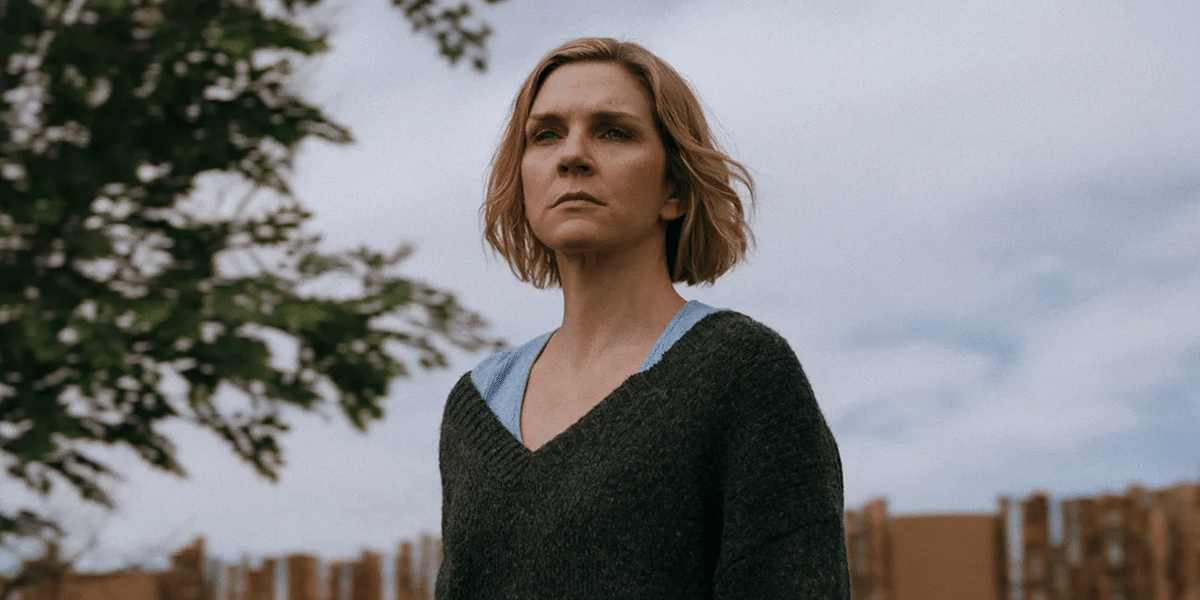
Should we be afraid of consensus? Pluribus and the horrors of mainstream happiness
Opinion + AnalysisSociety + Culture
BY Joseph Earp 12 NOV 2025
Partway through Dostoyevsky’s The Brothers Karamazov, the author neatly summarises one of the more troubling questions that undercuts civilisation: is it ethical for widespread happiness to come at the expense of the discontent of select individuals? Or, to put it simply: do the needs of the many outweigh the needs of the few?
“Let’s assume that you were called upon to build the edifice of human destiny so that men would finally be happy”, the troubled Ivan Karamazov says. “If you knew that, in order to attain this, you would have to torture just one single creature, would you agree to do it?”
That one question has been probed and explored time and time again in the years since Karamazov was published, most notably in Ursula LeGuin’s sci-fi story The Ones Who Walk Away from Omelas, in which the happiness of a flourishing city depends totally on the torture of a young girl. But it has perhaps never been as thoroughly – not to mention amusingly – explored to the extent that it is in Pluribus, the new sci-fi show from Breaking Bad creator Vince Gilligan.
In Gilligan’s re-telling, near-global happiness is an external force: a virus of sorts, which turns the world’s population into a hive mind of mutually contented drones. The one miserable, unlucky individual whose perpetual unhappiness sets her apart from the mainstream: Carol Sturka (Rhea Seehorn), who appears to be immune to the virus. Or rather, temporarily immune, given much of the early episodes of the show follows the rising, blackly comic threat of the hive mind searching for ways to make Carol one of them.
“Once you see how wonderful it is….” a member of the hive mind tells Carol early on, speaking to her directly from her television set. The hive promises happiness, peace and the end of all human conflict. What they also represent: the tyranny of mainstream thought, an enforced and established consensus where majority rules, no matter how discontented outliers might be. And where happiness itself is dangerously considered the main goal of all human existence.
The problem with happiness
One of Gilligan’s masterstrokes is to set Carol out of the mainstream even before the virus spreads. When we meet her, she’s a beloved romantasy author who can’t stand either the mindless content that she churns out, or the horde of rabid fans who adore her. In the first episode, her business/life partner Helen (Miriam Shor) mocks Carol’s dislike of adulation, teasing that she’s a perpetual miser, illogically rejecting the good time that’s being offered to her.
But when the mainstream offers mere happiness, we should reject it, as both Gilligan and Dostoyevsky seem to suggest. A life of contentment and fitting in with the crowd isn’t an ethical good in and of itself. As the rise of increasingly deranged social media slop proves – the kind of quick dopamine fix provided by TikTok – there’s so much more to life than merely being entertained.
The person who sits in their room all day watching Instagram reels could conceivably be very happy, but wouldn’t we all suggest that they might want more? Should they in fact pursue something greater and more important than simply having a good time?
This is the threat posed by Pluribus’ hive. In an ideal world, happiness should be a kind of side effect of good, not something to be pursued blindly for its own sake. As in, happiness should be what happens when we achieve virtuous behaviours – when we care for others, or pursue a flourishing life. And it certainly should not be enforced by the mainstream at the expense of individual freedoms and wants.
Even as Pluribus’ plot progresses, and it is revealed that Carol’s unhappiness is a very literal threat to the hive – when she lashes out at them, members of the hive abruptly die – the needs of those who sit in the mainstream should never be held above the deep unhappiness of those who also must operate within the world. Not only because enforcing the desires of the collective onto the individual is a harm in itself, but because sometimes – maybe even often – the desires of the collective aren’t particularly desirable.
In praise of conflict
Pluribus slowly encourages us to be suspicious of the idea that the hive are actually as happy as they claim to be. Do we really think that happiness is only a flood of dopamine throughout our body? If so, then as the philosopher Robert Nozick once asked, wouldn’t we therefore choose to step into a machine that did nothing but probe our dopamine receptors for all eternity, living an artificial life where we submit to being little more than switches that can be flipped in order to produce joy?
It doesn’t seem like many of us consider happiness only that. Happiness is what happens when we go to the other side of hardship; when we set ourselves goals and then achieve them. Ultimately, it’s a response to conflict and unhappiness, not the absence of conflict and unhappiness altogether.
Enforced mainstream happiness isn’t just ethically harmful for those who have it enforced upon them; it might be harmful to those who actively want it.
In the age of AI, these issues have never been more timely. In fact, Gilligan himself seems aware of this: each episode of Pluribus ends with a message, hidden in the credits, that reads, “this show was made by humans”.
We live in an era where tech companies constantly promise us that AI will bring ease, contentment, and the ability to fit in with our co-workers, friends and family – with the collective. Even if AI can do our jobs for us, or write tricky text messages to our loved ones, decreasing our discomfort, why would we even want that?
Now more than ever, we should follow Carol’s lead and become perpetual sourpusses. As it turns out, being a grump might be one of the most ethical things of all.

BY Joseph Earp
Joseph Earp is a poet, journalist and philosophy student. He is currently undertaking his PhD at the University of Sydney, studying the work of David Hume.
Ethics in your inbox.
Get the latest inspiration, intelligence, events & more.
By signing up you agree to our privacy policy
You might be interested in…
Opinion + Analysis
Society + Culture, Business + Leadership, Health + Wellbeing
Make an impact, or earn money? The ethics of the graduate job
Opinion + Analysis
Society + Culture
The Festival of Dangerous Ideas has been regrettably cancelled
Opinion + Analysis
Business + Leadership, Health + Wellbeing, Society + Culture
Corruption in sport: From the playing field to the field of ethics
Opinion + Analysis
Society + Culture
Why are people stalking the real life humans behind ‘Baby Reindeer’?
David and Margaret spent their careers showing us exactly how to disagree
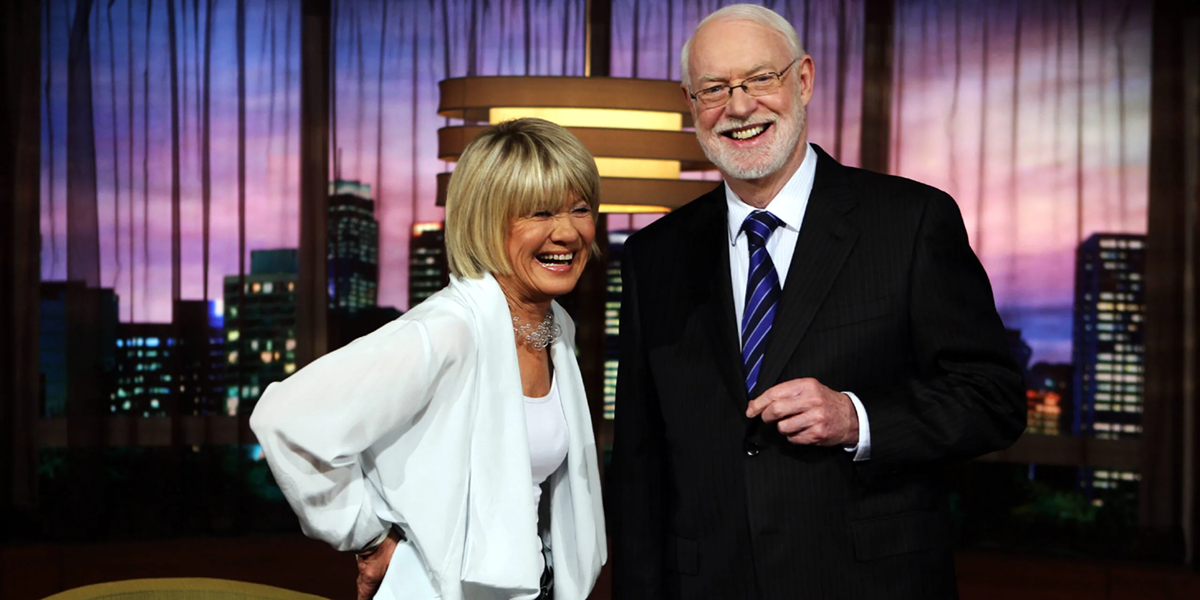
David and Margaret spent their careers showing us exactly how to disagree
Opinion + AnalysisSociety + Culture
BY Joseph Earp 19 AUG 2025
When David Stratton – critic, TV presenter and hero to a generation of movie lovers – died last week at 85, he was immediately honoured as one of this country’s true soldiers of cinema: a relentless advocate who spent his life championing the artform he loved.
Cinema had a loyal, passionate and fiercely intelligent friend in David Stratton. He was a man who worked hard to make loving movies seem serious and worthwhile – so much more than just a hobby.
But over the course of his long and varied career, Stratton didn’t just kindly, patiently and honestly explain his passions. Along with his onscreen co-host Margaret Pomeranz, he also taught us a deeply valuable ethical lesson, time and time again: a lesson in the fine art of disagreement.
What do Lars Von Trier and Vin Diesel have in common?
Pomeranz and Stratton were, from the very start of their time together, opposites. Pomeranz, who began her career in television as a producer, and was encouraged to move in front of the camera by Stratton, prized a curiously outrageous form of entertainment far more than Stratton.
Stratton loved to laugh, make no mistake, but he drew a line at anything he considered tacky. Pomeranz, by contrast, loved that stuff. When they butted heads, it was over films like Team America: World Police (Pomeranz loved it; Stratton hated it); Sex And The City 2 (Pomeranz said it contained a “jacket she’d kill for” and gave it three stars; Stratton called it “offensive”).
These differences in opinion weren’t just a casual “let’s agree to disagree” partings of ways. Once, memorably, Pomeranz gave Lars Von Trier’s Dancer in The Dark five stars, while Stratton gave it zero. When Pomeranz stood up for Vin Diesel, a performer Stratton hated, Stratton lightly poked fun at her, saying she wanted Diesel to “save her.” Possibly their biggest disagreement was over the classic Australian film Romper Stomper, starring Russell Crowe as a wild-eyed neo-Nazi. Stratton not only thought the film was terrible, he thought it was actively ethically harmful. Pomeranz gave it five stars.
Sometimes these disagreements got a little heated. Stratton could be dismissive; Pomeranz seemed occasionally exasperated with him. But the pair never lost respect for one another, no matter how far apart their tastes pulled them – and, importantly, they never started throwing barbs at each other. Their disagreement was localised to the thing they were disagreeing about, not ad hominem snipes at the other’s character.
Pomeranz herself acknowledged this, in a recent tribute written to honour her friend and colleague. “I think it’s extraordinary that, over all the time that David and I worked together, we never had a falling out”, she wrote. Disagreements between the two were common. But true breaks in the relationship – true threats to their working together – never were.
The power of disagreement
Sometimes, disagreement is cast as an impediment to societal functioning. We can all be guilty of occasionally speaking as though disagreement is the enemy – as though for us to all flourish, we should all get along, all the time. That’s not to say that there are some matters where disagreement should be encouraged – the power of disagreement is not a free card to put every matter up for debate, no matter how harmful.
But the history of philosophy shows us there’s power in sometimes parting opinion. Plato, for instance, presented almost all of his arguments in the form of debates, with characters going back and forth amongst each other on what is the correct behaviour. Plato’s “dialogues”, and thus, his entire ethical worldview, were fashioned out of disagreement.
It is in disagreement, after all, that we get to honour one of the beautiful things about our world – difference, uniqueness, and the full richness of human experience.
It would be a very boring, and perhaps even insidious, world if we all thought the same thing. After all, a forced unity of opinion is one of the hallmarks of fascism.
Disagreements, if handled and conducted well, can also guide us away from extremes. In some matters, truth lies in the middle of two poles. So it went on The Movie Show at least – I am not convinced we always agreed with our favourite from the pair. As viewers, our own tastes fluctuated between the extremes of Pomeranz and Stratton. In their disagreements, we could pick and choose elements of their tastes, and construct our own.
And again, these were debates that never descended into name-calling, or anger. In this, Pomeranz and Stratton taught us another ethical lesson – that we can treat someone disagreeing with us as someone offering us kindness. Having to justify and argue for our own positions helps us better understand them. And it helps us better understand the world around us; the people around us.
Laying my own cards on the table, I’ve always been more of a Pomeranz person (I love Von Trier, Romper Stomper, and Team America). But that’s just the thing. No matter how much I, a viewer raised on The Movie Show, found myself grumpily disagreeing with Stratton, it never made me dislike him. And when he passed, the loss I felt was not just the loss of a man I had always admired. It was the loss of a defender of art and a good sparring partner – no matter that it was one-sided sparring, through the TV. Disagreement done well is a gift. And no one more generously gave out that gift than David Stratton.

BY Joseph Earp
Joseph Earp is a poet, journalist and philosophy student. He is currently undertaking his PhD at the University of Sydney, studying the work of David Hume.
Ethics in your inbox.
Get the latest inspiration, intelligence, events & more.
By signing up you agree to our privacy policy
You might be interested in…
Opinion + Analysis
Science + Technology, Business + Leadership, Society + Culture
AI might pose a risk to humanity, but it could also transform it
Opinion + Analysis
Politics + Human Rights, Relationships, Society + Culture
Of what does the machine dream? The Wire and collectivism
Opinion + Analysis
Society + Culture
How The Festival of Dangerous Ideas helps us have difficult conversations
Opinion + Analysis
Relationships, Society + Culture
Meet Eleanor, our new philosopher in residence
The ethical honey trap of nostalgia
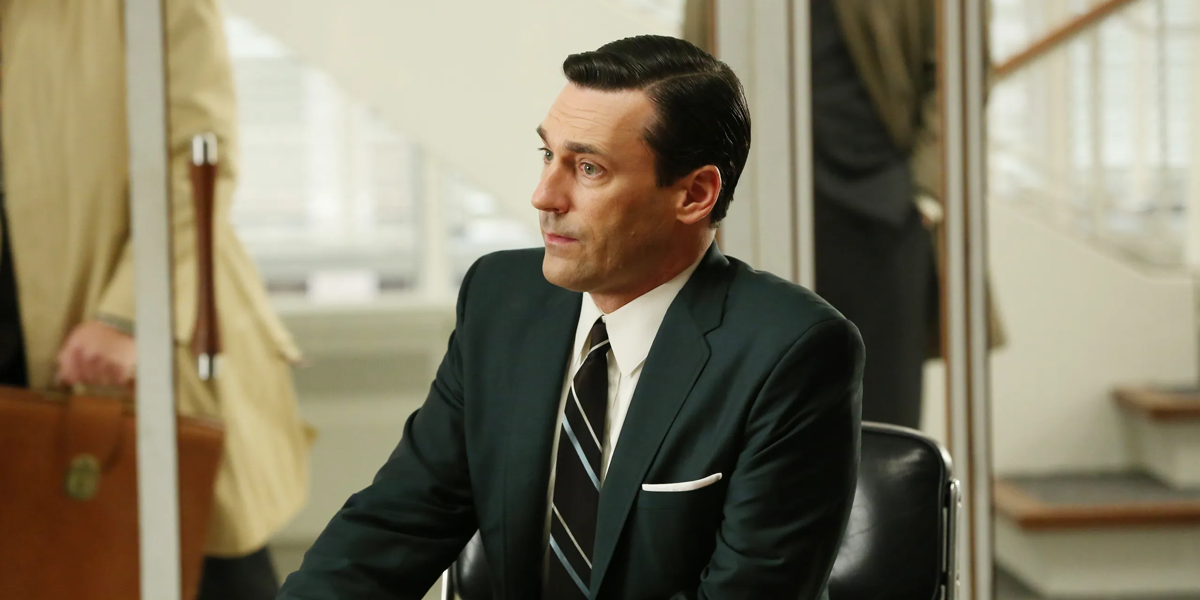
Marvel’s in trouble. The once box office-dominating brand has hit every branch on the way down as of late, from cancelled shows to thinning audiences. So, consider it a sign of the times that the folks behind the behemoth have attempted to enliven their cinematic futures not by looking forward, but instead casting their gaze way back.
The Fantastic Four, the third attempt to make the family of superheroes work on the big screen, jettisons the usual digital sheen of superhero properties in favour of old-fashioned nostalgia. Set in an alternate, 1950s-style world, the film’s visual style and production values have been heralded as a bold break from the norm – which is funny, given how deliberately re–trotted they are.
Not only has ‘50s fantasy been done before in, y’know, the ‘50s, but we’ve already had multiple recycles of that trend, from the glossy world of Mad Men to the screwball textures of films like Down With Love. Marvel’s “new” style is not just a throwback. It’s a throwback of a throwback.
The antidote to irony
The film’s not alone in that open nostalgia, either. James Gunn’s Superman reboot attempts to make the gung-ho, gee-wizz character work by similarly leaning into an old-school fantasy, where journalism is heralded as truth-telling, and unabashed optimism is the name of the day. Then there’s Lena Dunham’s new rom-com series Too Much, which offsets its decidedly modern story with near constant references to Jane Austen-inflected romance, openly lusting after a bygone world where manners ruled the day, and sincerity was the default response.

This sudden rush of nostalgia can be read, above everything else, as a society trying to shake itself free of cynicism and layers of irony. The 90s saw post-modern go mainstream, with every cinematic hero affecting a wise-cracking, subversive mode, and over the decade and a bit after, that irony only got more layered. Eventually, you end up with someone like Deadpool, who can’t take a breath without acknowledging that he’s a character in a movie.
It was the writer David Foster Wallace who saw where this was all going to take us, writing over 20 years ago that “irony and ridicule are entertaining and effective, and that, at the same time, they are agents of a great despair and stasis in US”. Irony reduces and destroys, and is inherently oppositional in nature – not just aesthetically, but ethically, leaving us paralysed by our own smartness and subversion, without any energy left over to actually do anything.
And our need to do something is only greater than ever – as the world gets darker and more dangerous, it makes sense that we would turn back to the forward thinking and action of the ‘50s. The Fantastic Four and Superman come from a time where heroes actually believed that the world was a good place, and fought to make it even better. Being nostalgic for them means being nostalgic for proactive ethical agents, who, rather than spending their time brooding and moaning, fought for something. In short, it means being nostalgic for hope.
Nostalgia’s trap
But if we seek to distance ourselves from the dangerous trap of irony, then we should be careful to not run too open-armed into nostalgia. Nostalgia, after all, is its own kind of trap. Rather than making something genuinely new – something that responds to the world as it actually is – nostalgia is inherently regressive.
Philosopher Mark Fisher wrote about exactly this, seeing nostalgia as part of the “slow cancellation of the future”; the eradication of possibility and free-thinking. No wonder that conservatives the world over, Donald Trump chief among them, have aggressively nostalgic worldviews: nostalgia, when used improperly, can be a form of ethical despair and stasis too.
The nostalgia trap is laid bare in another film released this year – Danny Boyle’s 28 Years Later. In the film, an isolated community trying to get by in a post-apocalyptic world, find their strength in visions of nostalgic Britain. In one montage, early in the film, two of our heroes making their way across a dangerous landscape are intercut with images of British soldiers at Agincourt, all scored to a Rudyard Kipling poem – Kipling being that hero of early British imperialism. The heroes in Boyle’s film try to survive and draw their strength from remembering how things used to be. And in turn, they end up trapped, locked into regressive and cruel worldviews that damage them.
That thesis is made shockingly clear in the last five minutes of the film, where the young hero (spoiler alert), finds himself saved by a roaming gang all made up of thugs dressed like disgraced pedophile Jimmy Savile. The young hero accepts them, open-armed. The kind of nostalgia that he has been raised on has no room for nuance. It’s essentially flattening, making a sort of caricature of England’s past.
In this way, Boyle criticises the nullifying effects of nostalgia: it casts the entire past as something to return to, without remembering its horrors and its shortcomings. If all we ever want to be is what we once were, then we will never truly change.
Nostalgia might be useful to energise us, but only if it’s used selectively and critically – if we aim to be better than what we once were, not merely the same.
As with so many things, we find our way forward through the mid-ground. Not just recreating the 50s, but taking what we want from it – the hope, the energy, the sense of optimism – and jettisoning what we don’t. The way to avoid the cancellation of the future, after all, is by believing that the future exists – that there’s still room, even now, to use the past to create something that has never occurred before.

BY Joseph Earp
Joseph Earp is a poet, journalist and philosophy student. He is currently undertaking his PhD at the University of Sydney, studying the work of David Hume.
Ethics in your inbox.
Get the latest inspiration, intelligence, events & more.
By signing up you agree to our privacy policy
You might be interested in…
Opinion + Analysis, READ
Society + Culture, Relationships
Losing the thread: How social media shapes us
Opinion + Analysis
Climate + Environment, Health + Wellbeing, Society + Culture
Melbourne Cup: The Ethical Form Guide
Opinion + Analysis
Business + Leadership, Society + Culture
A win for The Ethics Centre
Opinion + Analysis
Relationships, Society + Culture
The #MeToo debate – recommended reads
Arguments around “queerbaiting” show we have to believe in the private self again
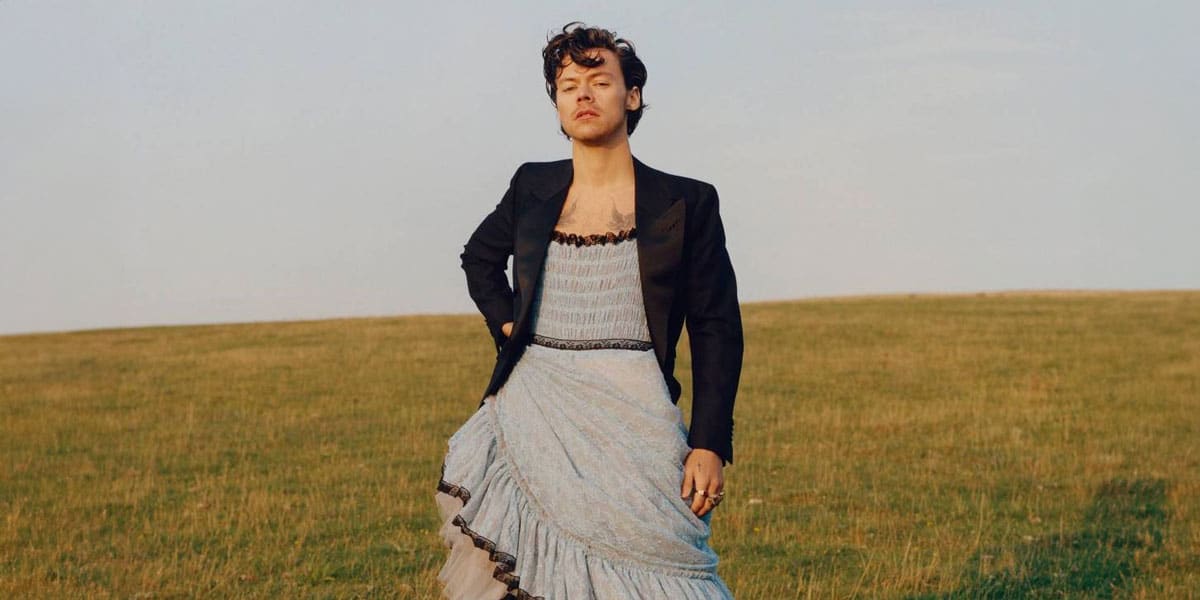
Arguments around “queerbaiting” show we have to believe in the private self again
Opinion + AnalysisSociety + Culture
BY Joseph Earp 3 JUN 2025
Back in 2020, pop star Harry Styles caused a stir when he made the supposedly taboo move of appearing on the cover of Vogue magazine wearing a dress.
The stir was probably to be expected, sadly. Though such fashion choices used to go largely uncommented upon, sexuality and gender has become a hot topic issue, and any public suggestions of gender fluidity or queer sexuality tends to prompt hysteria from conservative commentators. But it wasn’t just this group who had something to say. Styles’ dress also prompted a wave of discourse amongst progressives around “queerbaiting”.
Like so many contemporary culture clashes, at the heart of these arguments lie questions about the self: how much of someone else’s identity are we entitled to?
Queerbaiting and the demand for the entire self
At its heart, queerbaiting is a term applied to a suspected marketing strategy. The claim is that some artists and public figures court the attention of queer and allied audiences by pretending to be queer – or at the very least, suggesting that they are – in order to increase their fanbase, general public standing, and sales.
But knowing whether a public figure is actually queerbaiting, or if they are indeed queer, requires demanding access to key aspects of their identity, that once upon a time, we might have been more okay with them keeping private. Queerbaiting thus normalises our desperate hunger for, and perpetuation of, gossip – but here, it casts feeding that desire for gossip as some kind of moral act.
The least harmful examples of these investigations into public figures’ identity markers are basically just online gossip. For example, discussions around the sexuality of actors like Hugh Jackman, or filmmakers like Baz Luhrmann, have existed for a long time. The most harmful examples resemble old-fashioned “outing”. For instance, just a few years ago, one of the key players of the TV show Heartstopper felt pressured into publicly revealing their sexuality to avoid accusations of queerbaiting. “I’m bi,” he wrote. “Congrats for forcing an 18-year-old to out himself. I think some of you missed the point of the show.”
The need for a private self
Discussions about queerbaiting have tricked us into believing that we are not just entitled to a celebrity’s personal life because we are snoops, but because we gain something morally through that demand.
While it might be a well-intentioned, certainly – we should be suspicious of the behaviour of the ultra-rich and public figures trying to gain more capital, particularly when it comes to the harnessing of marginalised identities – that suspicion does not undo the need for privacy.
The demand that people must “out” themselves has always been problematic – but now, in an increasingly dangerous international political climate, such as the Trump administration emboldening anti-LGBTQIA+ groups, it has become actively harmful. When we try to convince ourselves that the entitlement to someone’s sexuality or gender is “logical” or reasonable, we start sliding down a pretty slippery slope, at risk of ending up in a place where marginalised groups have no right to privacy, in a world that has the potential to become only more hostile.
More than that, queerbaiting enforces a categorised, inflexible and outdated understanding of gender and sexuality that progressives have done a lot of work to abandon. Demanding that someone label themselves, when they might not be ready to do so, or might not even have the personal language yet to decide what precise label that they would use, makes the spectrum of sexuality seem unnervingly rigid.
After all, experimenting with a fluid sexuality and gender can be, in some cases, a slow process. Forcing someone to label themselves, when they may just be at the beginning of that journey, goes against so much good work that progressives have done to create a freer culture. The worry is not, necessarily, that celebrities themselves are being harmed by queerbaiting – but that the direction of the public discourse will have a trickle down effect, one that will normalise non-ideal practices and behaviours.
It was the philosopher John Stuart Mill who most carefully laid out the importance of the “private sphere.” For Mill, every person should be entitled to thoughts, beliefs, and sometimes even actions, that were outside the remit of the state and others – that belonged only to them. Mill foresaw that trying to police such a private sphere was akin to a kind of intellectual fascism: as soon as we let go of our private selves, we make our whole selves controllable.
Importantly, Mill believed that actions and beliefs in the private sphere stopped being ungovernable when they harmed others – he did not think that we were just free to do whatever we liked, under the guise of our privacy. But he did believe that we were entitled to a self which was ours and ours alone.
We would do well to remind ourselves of Mill’s argument. Celebrities sign up to giving a great deal of themselves to the public eye – but that does not mean that they need to give all of it. Even a public figure is allowed a private self. And when we forget that, and we start demanding more and more, we normalise the harmful attitude that privacy is something that can be given up, rather than an inalienable right that we should all enjoy.

BY Joseph Earp
Joseph Earp is a poet, journalist and philosophy student. He is currently undertaking his PhD at the University of Sydney, studying the work of David Hume.
Ethics in your inbox.
Get the latest inspiration, intelligence, events & more.
By signing up you agree to our privacy policy
You might be interested in…
Opinion + Analysis
Society + Culture
David and Margaret spent their careers showing us exactly how to disagree
Opinion + Analysis
Politics + Human Rights, Relationships, Society + Culture
The ethics of tearing down monuments
Opinion + Analysis
Relationships, Society + Culture
What does love look like? The genocidal “romance” of Killers of the Flower Moon
Opinion + Analysis
Business + Leadership, Society + Culture
Access to ethical advice is crucial
What does Adolescence tell us about identity?
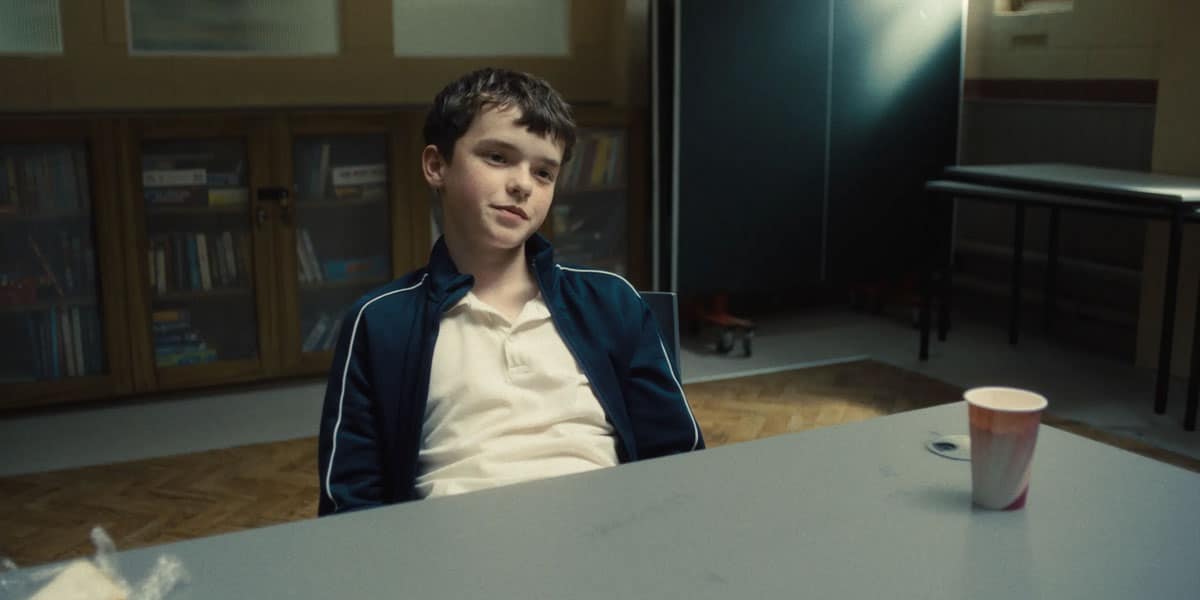
What does Adolescence tell us about identity?
Opinion + AnalysisSociety + Culture
BY Joseph Earp 27 MAR 2025
Adolescence, the exemplary new Netflix series that has become immediate water cooler conversation fodder, is built around a filmmaking decision that might have, in lesser hands, felt like a gimmick. Each of the four episodes of the show are filmed in one continuous, unbroken take.
Here, the decision is not just an inspiring feat of filmmaking verve. It also has a thematic point. Adolescence concerns the murder of a female high school student – the accused is 13-year-old Jamie Miller (Owen Cooper). The show carefully explores the fallout of that violent crime, in particular, what it churns up in the heart of Jamie’s father, Eddie (Stephen Graham, also the show’s co-creator).
The themes of Adolescence are laid out early, and clearly: misogyny; the anger in the heart of teenage boys; and, in particular, the forces that influence adolescents. These themes coalesce in one of the major questions of the show: who shapes the identity of young people, and, pressingly, young men? Is it their parents? The world around them? Or, most worryingly of all, the bad ethical actors who have made their careers through stoking the fires of hatred?
That unblinking, never-cutting camera allows us to explore this question with striking clarity. The camera never looks away. So painfully and shockingly, neither can we.
Who makes our children?
Unlike many other works of art based around crime and murder, Adolescence is not, particularly, a whodunit. It is more like a whydunit. We do have questions early on as to whether Jamie actually committed the crime of which he has been accused, but this is not the focus of the show. Instead, the mystery is a broader, harder, more probing one: why do young men commit acts of violence against women? More specifically, who formed Jamie’s ethical identity?
Eddie, Jamie’s father, seems to worry that it might be him. He spends the show wracked by guilt, confronted with the knowledge of his son’s suspected crime, and terrified that he did not do enough to stop him from walking down a very dark path. But is he solely to blame? The beauty of Adolescence is that it instead leaves those “responsible” for the dark parts of Jamie’s personality nebulous.
In his groundbreaking work, Sources of the Self, philosopher Charles Taylor provides an answer – albeit a worrying one. He argues that identity is formed by a collective. In his view, human beings are defined and constructed through their relationship with others – we become who we are, by virtue of who we interact with. On this view, parents are of course responsible for the shaping of their children’s ethical makeup – but they’re not solely responsible.
And they’re particularly not responsible when adolescence hits. Every parent to teenagers knows that rebellion against the older guard is inevitable – and parents are often the last people that children will confer with. That, according to Taylor, leaves children susceptible to other formative ethical forces – and in the case of Jamie, those are the bad misogynist actors that he is surrounded by, from his schoolmates, to the ever-pressing threat of online radicalisation.

The spectre of the other
Taylor’s view is particularly troubling when combined with the writings of another philosopher, Giorgio Agamben. In his major work, Homo Sacer: Sovereign Power and Bare Life, Agamben argues that ethical identities are especially formed by the rules of inclusion and exclusion. People become who they are by deciding who they are not, forming an in and an out-group that gives them a sense of security in their own personhood.
In Adolescence, it’s exactly that exclusionary nature that seems to lead Jamie down his dark path. His world, like the world of far too many teenage boys, is defined by strict and dangerous binaries: boys versus girls, winners versus losers. His worldview, when we get to hear it, seems defined by hatred for what is different, and a desperate clinging to that, which he sees as the same as himself. When such strict battle lines are drawn, violence is a natural endpoint.
What then do we do to attempt to get our teenage boys back on the right path? Away from violence, hatred, and exclusion? Adolescence, bravely, doesn’t offer a solution. In fact, that’s exactly what Taylor and Agamben show us – that one simple, pat, generic solution doesn’t have the power to change anything.
After all, if we take the work of those philosophers to be true, then we see the entire social environment as constitutive of identity. That means parents. It means friends. It means the entertainment young men consume. It means what they hear in the playground.
Our gaze must significantly broaden – and we must not consider the likes of Jamie to be an outlier. Instead, we must see him as a product of an entire social system.
When, in the final episode of Adolescence, Eddie asks his wife, “shouldn’t we have done better?”, the initial impulse is to assume he means the two of them. The better read is that he means all of us.

BY Joseph Earp
Joseph Earp is a poet, journalist and philosophy student. He is currently undertaking his PhD at the University of Sydney, studying the work of David Hume.
Ethics in your inbox.
Get the latest inspiration, intelligence, events & more.
By signing up you agree to our privacy policy
You might be interested in…
Opinion + Analysis
Society + Culture
11 books, films and series on the ethics of wealth and power
Opinion + Analysis
Society + Culture
8 questions with FODI Festival Director, Danielle Harvey
WATCH
Society + Culture
Stan Grant: racism and the Australian dream
Opinion + Analysis
Relationships, Society + Culture
Community is hard, isolation is harder
Does your body tell the truth? Apple Cider Vinegar and the warning cry of wellness

Does your body tell the truth? Apple Cider Vinegar and the warning cry of wellness
Opinion + AnalysisHealth + WellbeingSociety + Culture
BY Joseph Earp 19 FEB 2025
Of all the snake oil salespeople who have dominated the wellness space, few have been as destructively, unsettlingly committed to the bit as Belle Gibson.
For a while, Gibson made her name on her own alleged suffering. A social media influencer, author, and wellness personality, she claimed to have been diagnosed with a horrifying assortment of cancers, from tumours in her brain, to tumours on her liver.
More than that, she claimed that these cancers were responding not to mainstream medicine, but to a wholefood diet. Gibson, a young parent based in Melbourne, was essentially arguing that she had found one of the cures for cancer.
Of course, she hadn’t. When it became clear that Gibson was not passing on some of the money that she had made from her successful cookbook and app to charity, as she promised, her tangle of lies began to fall apart. In fact, Gibson had never been diagnosed with cancer, as she admitted in a trainwreck interview with 60 Minutes, half an hour of television so actively unsettling that it is still seared into the mind of many of the Australians who watched it.
But even then, even when challenged, she never quite admitted the truth. In one memorable moment of the 60 Minutes episode, restaged in the recent Netflix miniseries Apple Cider Vinegar, Gibson is asked to define what “truth” is.
Her mumbly non-answer was taken as evidence that Gibson couldn’t stop lying, even when asked to respond to even the most basic of questions. But her inability to give a clean definition of truth cuts right to the heart of the wellness space – and, hopefully, teaches us how to stay clear of its worst impulses.

The whole truth
Traditional medicine and alternative therapies are constantly lobbied by the likes of Gibson and other wellness influencers, who are suspicious of the “objectivity” offered by mainstream medicine. Gibson, and other traditional medicine advocates like disgraced chef Pete Evans, point to science’s flaws – to the way that medicine messes up. This, they say, is proof that mainstream medicine can’t answer all our problems.
But these critiques of science are not just the domain of wellness influencers – they are also common in post-modern and pragmatist philosophy.
In his book Against Method, Austrian philosopher Paul Feyerabend threw chaos into the established notion of the scientific truth. According to Feyerabend, there is no such thing as the “scientific method” – no way to make the multitude of different ways to enact science appear streamlined and “correct.”
By contrast, Feyerabend advocated for an “anything goes” principle of scientific enquiry, arguing that scientists should follow whatever research paths seem particularly interesting to them.
According to him, science is not some way to get to the heart of the matter – to understand what is definitely, objectively true. Instead, he sees medicine as a way of understanding the world, an art form in the same way that painting a picture, or writing a poem, is a way of understanding the world.
In this way, Feyerabend echoes the work of pragmatist philosopher Richard Rorty. Rorty argued that there is no viewpoint that exists outside of context – no way to get “more objective”. We can’t ever see past who we are and where we are in time. We are constantly mired in context. A “viewpoint outside history” does not exist. Science isn’t a mirror that can be better polished, and eventually represent the world exactly as it is. The most we can hope for is some sort of established consensus, a bunch of subjective viewpoints that align with each other, rather than an objective reality.
Rorty and Feyerabend’s arguments do have some genuine pull to them. It is correct that science is always changing – that discoveries that seemed “objectively true” ten years ago get replaced and reordered. It is also correct that medicine mucks up, and that many are disenfranchised from mainstream forms of science because of the way it uses claims of objectivity like a cudgel, silencing all dissenters. As in, “this is true, and anything that goes against this is false.”
But if we agree with the likes of Feyerabend and Rorty, and do away with the mainstream “truth” provided by science, are we stuck with the likes of Belle Gibson? Does throwing away objectivity mean that we must put up with the liars, scammers, and fraudsters? Does it mean that Gibson really does have the same claim to the “truth” – a truth she could not even name?
The healing nature of balance
The short answer is, of course, no. If questioning the scientific method really did mean that Gibson, who definitely, plainly, simply lied – and made a great deal of cash off those lies, and the perpetuated suffering of those who believed her – then that questioning would be patently dangerous.
But, as with so many things, the answer lies in the acceptance of balance. We do not have to treat medicine as a new form of religion, with iron-clad rules that we dare not ever question. Nor do we have to completely, constantly reject all of its findings, and put up absolute falsehoods in their place.
Rorty was never advocating for the likes of Gibson. Even though he undid some of the foundations of objectivity, he was not arguing that we can do whatever we like, or believe whatever we like. One of his most important and practical ideas, as mentioned above, was the idea of consensus. Even if we take the postmodern approach that “objectivity” is a shaky concept, we can create a picture of what consensus is that gives us all the things we like about objectivity.
As in, consensus can be reached by scientists and doctors. These specialists have dedicated their lives to uncovering the best ways to heal and help our bodies. When enough of these specialists find a common way to heal and help, then we have reached consensus. Consensus has the force of objectivity – it has reasons to explain itself. It’s not just random. It’s not Gibson just making things up. It’s a way of saying, “this works, and a lot of people agree that it works.”
What separates this picture of consensus from “objectivity” and its potential harms, moreover, is that consensus can change. When new discoveries are made, they can be shared around specialists, who can alter what they believe. It’s not that they were “wrong” before. It’s that consensus is malleable, changeable, and ever in-flux.
Belle Gibson couldn’t define what the truth is. She used that messiness to exploit people, and to cause harm. But we can ever-so-slightly release our hold on objectivity, without becoming Gibson. And in doing so, we can embrace a modern medicine that does what it was meant to do: help people.

Ethics in your inbox.
Get the latest inspiration, intelligence, events & more.
By signing up you agree to our privacy policy
You might be interested in…
Opinion + Analysis
Health + Wellbeing, Business + Leadership
The ethical dilemma of the 4-day work week
Opinion + Analysis
Health + Wellbeing, Politics + Human Rights
Disease in a Time of Uncertainty
Opinion + Analysis
Health + Wellbeing, Business + Leadership
Service for sale: Why privatising public services doesn’t work
Opinion + Analysis
Health + Wellbeing, Relationships
The myths of modern motherhood
BY Joseph Earp
Joseph Earp is a poet, journalist and philosophy student. He is currently undertaking his PhD at the University of Sydney, studying the work of David Hume.
David Lynch’s most surprising, important quality? His hope
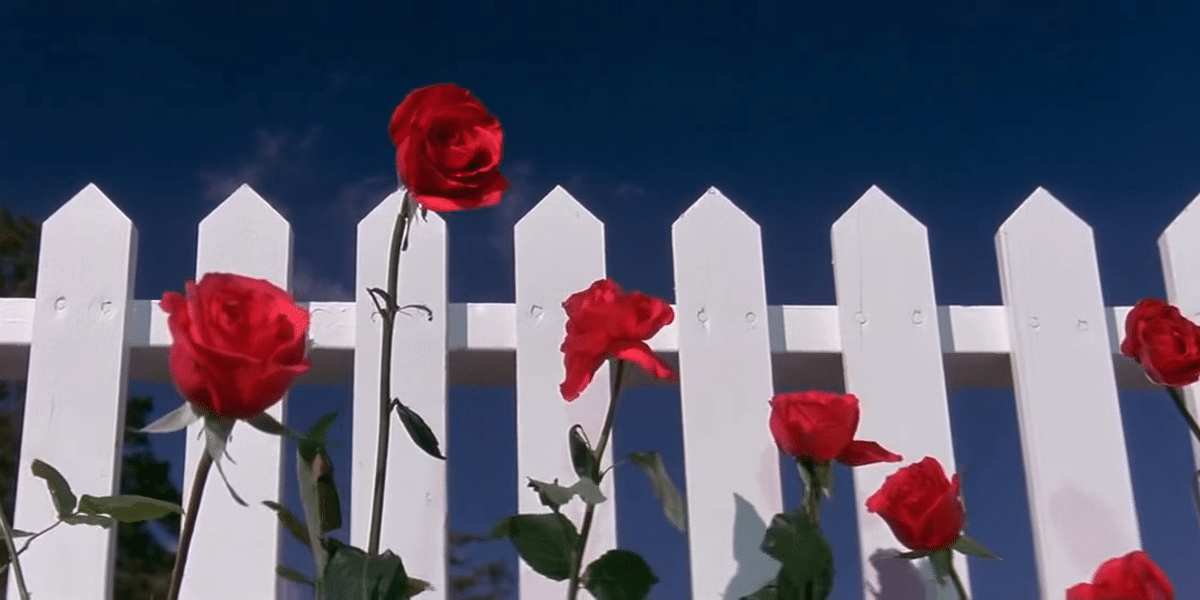
David Lynch’s most surprising, important quality? His hope
Opinion + AnalysisSociety + Culture
BY Joseph Earp 17 JAN 2025
David Lynch’s Blue Velvet – the film that turned an outsider auteur into something approaching a genuine cultural sensation – is, even after all these years, a hard watch.
The film sets up its thesis almost immediately. A montage of quaint images of small-town life, all blue skies and white picket fences, is disrupted by tragedy – the father of the film’s hero, Jeffrey Beaumont (Kyle MacLachlan) collapses in his yard, killed by a heart attack. The man’s dog laps at the hose clung in his dead, tight hands. And then Lynch’s camera, still exploring, does something both beautiful and terrible: it burrows under the soil, where a nightmarish cacophony of insects forage.
So there it is, Blue Velvet’s message – that beneath Americana, with its bright smiles and cups of coffee, lies horror. From that starting point, rape, torture and abuse abound, as Jeffrey’s voyeurism sends his path crashing into the orbit of Frank Booth (Dennis Hopper, in one of cinema’s most terrifying performances, all gritted teeth and mummy issues). We watch Dorothy Vallens (Isabella Rossellini) get tortured in various ways; we see Jeffrey beaten and humiliated. And perhaps most unsettlingly of all, we come to realise that the likes of Frank, a personification of pure evil, are more plentiful than we might ever want to believe. Even, if not especially, here, where the skies are blue.

The world is wild at heart and weird on top
Much has been made of this quality found in the films of Lynch, who died today after a battle with emphysema – the contrast between ethical virtue, and deep ethical horror. Throwing up these two disparate forces – good and evil – was the modus operandi of Lynch’s one-of-a-kind career.
Twin Peaks, his hit television show, unraveled the angelic exterior of murdered teenager Laura Palmer, and pit her against another of Lynch’s satanic figures, the supernatural drifter Bob. Wild at Heart, one of the more underrated films he ever made, plunged a loving young couple, Sailor and Lula, into an impossibly evil world. And The Elephant Man, a black-and-white muted howl of pain, saw a man with disabilities try to find hope amongst objectification and cruelty.

But what is not often discussed about Lynch is that he did find beauty, time and time again. Contrary to what some have written, Lynch’s veneer of smiles and blue skies wasn’t some ironic posturing, established merely to make the horror more horrifying. Other filmmakers have untangled the way that evil thrives in darkness, out of sight – that’s not what made Lynch special.
Lynch’s power – his genius, even – is that he believed fully in both of the forces that make the world what it is, the darkness and the light.
This is a rare sort of ethical dialectics: rare both in art, and in our personal lives. Believe too deeply in the evil of the world, and you will simply never get out of bed. Ignore that evil, and strive forward as though it isn’t there, and you will fall prey to an ignorance that will make you a poor ethical actor. The real trick in all things is to understand that truth, if we ever find it, exists in the middle of extremes.
Hence the model of the archetypal Lynch hero: Dale Cooper (MacLachlan, again), the handsome, profoundly odd detective hero of Twin Peaks. Dale has a goofy, almost unrepentant enthusiasm. He loves coffee; he loves pie; he loves the town of Twin Peaks. He’s all broad smiles, and dorky thumbs up, perpetually grinning to the small town residents that come to love him. But this optimism doesn’t exist in spite of the darkness of the world – it exists because of it.
That understanding is expressed through his deep affection for Laura Palmer, the dead young woman he never met. The more he learns about Laura, believed by the town to be the perfect all-American girl, the more he loves her, even as he comes to see the precise shape of her demons.
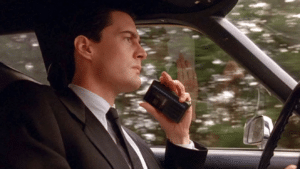
Lynch’s lesson is contained here. Cooper doesn’t choose to believe in the goodness of people at the expense of acknowledging their capacity for great harm. He understands that the world is built, in many ways, for cruelty to flourish; for abusers to thrive, for casual unkindness to go unremarked upon. And he also understands that, surprisingly, time and time again, human beings will decide to love each other.
The art life
This complicated optimism was also at the heart of Lynch’s deeply inspiring life outside of filmmaking. Like Cooper, Lynch was a famous lover of little treats, the kind of tiny slithers of goodness that aren’t just a distraction from the world – they are the world. There are countless memes of Lynch expounding the beauty of a good cup of coffee; enjoying two cookies and a Coke in the back seat of a car; and, perhaps most movingly of all, speaking lovingly of the importance of what he called “the art life.”
For Lynch, the art life was painting, thinking, and making things with your hands. “I had this idea that you drink coffee, you smoke cigarettes, and you paint, and that’s it”, Lynch said once, happily. There is horror in this world, but being an artist isn’t just an aesthetic choice – it’s an ethical one. Being an artist means being curious; looking; creating.
Rather than being swamped by the inexorable downward slide of humanity, the artistic life allows one to see the things that make us, at the end of the day, so blessed. So loved.

Blue Velvet contains that hope in its final scene. After taking a long drive through hell, the film wraps up not with an image of suffering or pain. Instead, one of its last shots is a robin sitting on a branch. A robin – that most ordinary of birds, so small as to be invisible, but a symbol, built up over the course of the film, representing love itself. “Maybe the robins are here,” Jeffrey says, cautiously. But, despite it all, they are.

Ethics in your inbox.
Get the latest inspiration, intelligence, events & more.
By signing up you agree to our privacy policy
You might be interested in…
Opinion + Analysis
Society + Culture, Politics + Human Rights
Pleasure without justice: Why we need to reimagine the good life
Opinion + Analysis
Society + Culture
Infographic: Tear Down the Tech Giants
Opinion + Analysis, READ
Society + Culture, Relationships
Losing the thread: How social media shapes us
Opinion + Analysis
Society + Culture
Should we be afraid of consensus? Pluribus and the horrors of mainstream happiness
BY Joseph Earp
Joseph Earp is a poet, journalist and philosophy student. He is currently undertaking his PhD at the University of Sydney, studying the work of David Hume.
What exotic pets teach us about the troubling side of human nature

What exotic pets teach us about the troubling side of human nature
Opinion + AnalysisRelationships
BY Joseph Earp 21 NOV 2024
On February 16, 2009, local police in Stamford, Connecticut received a highly unusual, and deeply horrifying 911 call – Sandra Herold, her voice hysterical, told them that her pet chimp, Travis, had attacked and was eating her friend. In the background of the call, along with the screams of the friend, police could hear the hollering of an enraged primate.
Sandra had purchased Travis over a decade prior. Their relationship was extremely, perhaps unnaturally close – she raised him as a human child, and after her own daughter died, Travis became her everything. Travis, who showed high levels of intelligence, ate with her at the dinner table. Each night, they slept side by side in the same bed.
There has been much speculation as to what flipped Travis into a rage. Sandra’s friend, the victim of his attack, was holding his favourite toy when he mauled her – an Elmo doll. Perhaps it was an instance of territorial aggression. Perhaps it was his unhealthy lifestyle, or the drugs that Sandra sometimes gave him; she had mixed Xanax into his tea, just before the attack. Regardless, the attack raises questions about the ethics of owning exotic pets – and what exactly makes them different to domesticated animals.

Animal ownership: Rights and wrongs
We live in a culture increasingly fascinated by the ethics of owning exotic pets. The pandemic-era Netflix smash hit Tiger King and the recent series Chimp Crazy take an outrageous look at the often eccentric people who choose to own lions, tigers, and primates. More often than not, these investigations into exotic pet ownership show the dark side of the industry – Joe Exotic of Tiger King fame was repeatedly accused of abusing his animals.
Private owners of exotic animals frequently commit clear ethical wrongs. “Many private owners try to change the nature of the animals by … mutilating them, or beating/electrocuting them into submission,” writes animal welfare expert Bobbi Brink. There is a fundamental attitude towards the animal that underpins these harms. Namely, the animal is being treated and defined wholly by its relationship to human beings, and what they can do for us. It becomes an object that owners can do what they wish with. Ownership of this type transforms a living being into what philosopher Immanuel Kant described as a “means” rather than an “end” – it is indistinguishable from property.
This is, in fact, the argument made by philosopher Gary L. Francione against all forms of pet ownership. Francione argues that there is no way to not see your pet dog as anything other than property – you control it, own it, reduce to it to a mere object. “As a practical matter, there is simply no way to have an institution of ‘pet’ ownership that is consistent with a sound theory of animal rights,” Francione writes. “‘Pets’ are property and, as such, their valuation will ultimately be a matter of what their ‘owners’ decide.” Elsewhere, writer Karen Dawn notes that solitary confinement is used to punish humans – according to her, for pack animals like dogs, life without others of their kind can arguably be considered solitary confinement.
However, there is a mutually beneficial nature to some forms of pet ownership. There is much to suggest that human evolution was shaped and moulded by our relationship with dogs – there is a mutual appreciation that goes both ways. We give them things, and they give us things back. This in turn builds an emotional connection that can give both humans and pets lives worth living. At least, some forms of pets.
The allure of power
The ownership of exotic animals is troubling because of the lopsided power dynamics at play. The mutual beneficence in the case of dogs simply does not apply when it comes to lions or chimps. They do not gain anything from being taken from their homes, locked away, and having their needs systematically and brutally unmet. Travis the chimp might have eventually committed an act of brutality – but his life before that point was filled with what philosopher Michel Foucault would describe as diffused, rather than acute, forms of brutality. It was the brutality of being separated from his species and his needs.
The question remains, then – why do people want to own exotic animals? What is the appeal? And what does that say about human nature?
Exotic animals represent the unknown; the other; the distinct. The drive of taking the other, “dominating” it and making it our own, is what philosopher Nietzsche called “the will to power.” According to Nietzsche, the dynamics of those who take, and those who are taken from, exist in all things – it makes sense they would also exist in our relationships with exotic pets.
There is some sense of perceived glory in taking a wild creature and bending it to your will, and often, unable to cater to their complicated needs, owners tend to restrict or harm exotic animals in some way.
This kind of domination is about the success of one way of living; proving the excellence of the recognisable, by making the unrecognisable more like it.
One of our most admirable traits as a species is our curiosity. Being interested in exotic animals, and in pets, speaks to that curiosity. We are drawn to what makes them tick. That in itself is not a problem. But we must ensure that our relationship is one defined by that curiosity; to that openness to a creature, and all that it wants and needs. In short – we don’t need to change the nature of the other, or what is different to us. We need to respect it.
Image: Tiger King, Netflix

Ethics in your inbox.
Get the latest inspiration, intelligence, events & more.
By signing up you agree to our privacy policy
You might be interested in…
WATCH
Relationships
Purpose, values, principles: An ethics framework
Opinion + Analysis
Health + Wellbeing, Relationships
How to deal with people who aren’t doing their bit to flatten the curve
Opinion + Analysis
Relationships
We live in an opinion economy, and it’s exhausting
Opinion + Analysis
Business + Leadership, Health + Wellbeing, Relationships
Ending workplace bullying demands courage
BY Joseph Earp
Joseph Earp is a poet, journalist and philosophy student. He is currently undertaking his PhD at the University of Sydney, studying the work of David Hume.
Where is the emotionally sensitive art for young men?

Where is the emotionally sensitive art for young men?
Opinion + AnalysisSociety + CultureRelationships
BY Joseph Earp 23 SEP 2024
The Sisterhood of the Traveling Pants, the 2005 young adult drama film, takes all of five minutes to set up its premise: what if you and your friends discovered the titular pair of jeans, which, despite your differences in size, fit you all perfectly? And, more than that, what if you all decided that these pants had magical behaviour-changing powers?
So far, so teen drama, particularly when the film starts unveiling the emotional canvas the film will play out on. Bridget (Blake Lively) has a crush, and a dead mother; Carmen (America Ferreira) is a child of divorce; Tibby (Amber Tamblyn) is stuck working a dead-end job.
But what is extraordinary about the film is the sensitivity with which it handles what could otherwise be tropes. Each of the heroine’s lives is disrupted by death and loss. They learn they are fallible; that they are subjected to forces they cannot control. They’re not whiny teenagers. They’re young people, making their way through the world – sometimes messily, but always with conviction.
The film is shockingly emotionally nuanced for a work of art made for, and about, teenagers. But what makes it more shocking is how plainly it exposes the absence of similar art for young men. The Sisterhood of The Traveling Pants – and films like it – are a core part of moral education, designed to validate young women in their feelings, both the positive and the negative. So, where is the male equivalent?
Art and moral education
None of this is to say that The Sisterhood of The Traveling Pants need only appeal to young women – the brush with which it paints is broad and vivid enough for those of any gender. But it still remains the case that the film was marketed to, and largely consumed by, young women. It sits alongside Stick It, She’s The Man, Riding In Cars With Boys, and Cinderella Story as part of an early 2000s trend of emotionally adult works directed towards young women. While these are stories are ostensibly about romance, they’re actually about self-discovery and self-possession.
Such films, as philosopher Greta T. Cullen observes, need not necessarily be “morally instructive” – as in, they don’t need to have all the moral answers. Instead, they ignite sympathy. They teach us both about our own world, and the worlds of those around us. As Cullen puts it, they “encourage an awareness of other people, their problems and sufferings.” Through that awareness, we can build a proper moral system – after all, it’s only when we understand how we affect other moral agents that we can decide how to treat them.
That, in fact, is precisely what makes art so important in moral education. The Sisterhood of the Traveling Pants isn’t prescriptive – it doesn’t tell us exactly what we should do. In fact, its heroines make more mistakes than most: Tibby, whose life is changed by a young girl with cancer, initially declines to visit her dying friend in hospital. The film isn’t an instruction guide. Instead, it’s a sort of training ground for sympathy, reminding us of the impact we have on each other – and the seriousness with which we should take that impact. Art, at its best, makes the world bigger. And after it has done that, we get to decide what to do with all that extra space.
The stoic male hero
Art targeted at young men is far less interested in interiority. Consider the likes of Deadpool, Top Gun: Maverick, and The Fast and The Furious films. These works of art are not interested in emotional nuance in the same way as The Sisterhood of the Traveling Pants is, because they’re not centred around emotionally changeable characters. Neither Deadpool nor Dominic Toretto need overcome internal obstacles – only external ones.
Art for young men tends to promote stoicism or, at the very least, inflexible leading men. Leads of young adult films directed at men are primarily unflappable – above all else, they value calm, and decisiveness. They are what Jon Brooks describes as “stoic superheroes”.
That’s not to say such art needs to be entirely dismissed – it has other uses. But the hole in male education around emotions – what we do with them, how they shape us – has profound knock-on effects.
When your heroes don’t validate you in your emotional complexity – in your essential fallibility – your moral life suffers. There is a loneliness to growing up without seeing a complex inner life on the screen. Films should, in some complicated way, forgive us. They should make it clear that we are not alone.
That loneliness is solidified by a further absence in young male cinema – a hole where there should be depictions of non-judgmental, accepting friendships. The “buddy comedy” genre does aim to rectify this gap, but such films are few and far between. The Sisterhood Of The Traveling Pants models genuine connection between its heroes, who are willing to be their true selves around each other. There is no real corollary for men.
There’s a sequence part way through The Sisterhood of the Traveling Pants where Tibby, the teenage shelf-stacker, steps out into the quiet of the afternoon, surrounded by her middle-aged co-workers as they smoke in the sun. She says nothing; they say nothing.
Later, this will become the setting where Tibby learns not just about loss, but also about the hard-won work required to give life meaning. For the moment though, all that happens is that Tibby stands there, the sky orange around her, and takes pause. It’s a moment of true emotional vulnerability – a brief flash of Tibby sitting in her feelings.
And that vulnerability is important. Without that vulnerability, genuine emotional connection is impossible. Which is why the dearth of such moments in art aimed at young men has such worrying implications. Many men struggle with their own vulnerability; struggle to feel authentic, and true. From that comes loneliness. From that comes pain.
There is a hole in male education, and it’s shaped exactly like this film. And, more specifically, a hole shaped like the image of a young woman, standing in the sunshine, staring straight ahead, and then slowly walking offscreen.
Image: Warner Bros. Pictures

Ethics in your inbox.
Get the latest inspiration, intelligence, events & more.
By signing up you agree to our privacy policy
You might be interested in…
Big thinker
Relationships, Society + Culture
Five Australian female thinkers who have impacted our world
Opinion + Analysis
Health + Wellbeing, Society + Culture
The right to connect
Opinion + Analysis
Relationships
Paralympian pay vs. Olympian pay
Opinion + Analysis
Business + Leadership, Climate + Environment, Relationships
ESG is not just about ticking boxes, it’s about earning the public’s trust
BY Joseph Earp
Joseph Earp is a poet, journalist and philosophy student. He is currently undertaking his PhD at the University of Sydney, studying the work of David Hume.
What are we afraid of? Horror movies and our collective fears

What are we afraid of? Horror movies and our collective fears
Opinion + AnalysisSociety + Culture
BY Joseph Earp 20 AUG 2024
In 1968, the dead walked the Earth. George A. Romero’s The Night of The Living Dead, shot on a shoestring budget in black and white and film stock, was the movie that popularised zombies as we now know them.
In the film, a ragtag group of survivors must band together, as corpses rise from the grave in a desperate search for human flesh.
Night of the Living Dead was a smash hit. It made more than 250 times its budget, becoming a cultural talking point, and scarring an entire generation. Taken on face value, its success is surprising. The film is unremittingly bleak, even for a horror movie – aside from the blood and guts, it also ends with one of cinema’s great downers, as the film’s hero, Ben (Duane Jones), is murdered not by the zombies, but instead an armed posse dispatched to kill the zombies, who confuse him for a reanimated corpse.
Given Ben is African-American, the film’s final image – his dead body set alight, burning to ash on top of a pile of zombie corpses – had powerful, painful symbolism for audiences in the late sixties. It was a time of huge social upheaval; of struggle, pain, and change. America was still in the midst of the Vietnam war, and the Civil Rights movement was continuing to gather steam.
Indeed, that collective social suffering is precisely the means of explaining Night of the Living Dead’s great success. Mired in images of real-life suffering, beamed into their homes via their TV sets, American audiences flocked to see a film that gave a voice to the feeling of the times – its ambient horror. To borrow a quote from horror director Wes Craven, Night of the Living Dead didn’t “create” fear – it released it.
Naming the unnamable
Horror’s persistent success – slashers almost always make money, and are a go-to for indie directors precisely because they’re almost guaranteed to make a financial return – speaks to the genre’s ability to address the unnamed. Each generation has its trauma, and each generation has a horror film that speaks to that trauma.
Alfred Hitchcock’s Psycho, released in 1960, was a reaction to a spate of serial murders – chiefly the killings committed by Ed Gein. Rosemary’s Baby, released the same year as Night of the Living Dead, bottled the collective anxiety that came from modern urbanisation: set in a sprawling apartment block, it posits that you can never truly know your neighbours. Carrie channeled first wave feminism, and the oppression conducted by both men and the church; Clive Barker’s Hellraiser explored queerness and kink, and the violent reaction to it; Hostel and Saw, the forerunners of the “torture porn” movement, were birthed by images of violence released out of Abu Ghraib; and Get Out compressed years of racist oppression into one shocking tale.
In this way, horror films tap into what philosopher and psychologist Carl Jung referred to as the “collective unconsciousness”. Jung believed that we all have both personal unconsciousness, and an unconsciousness shared by all. This deeper, shared unconsciousness is populated by “instincts”, “primal fears”, and “archetypes.” These archetypes directly tie us back to our ancestors – they are as old as human beings are. They are core figures, images, and stories, that, given they are located deep inside us, are frequently “strange” and disturbing. Jung gave these archetypes names, from “eternity” to “the profane”.
Horror draws on these archetypes. In fact, given how common archetypes are – we cannot help, Jung thought, coming back to them – sometimes, these archetypes can be described as “cliches.” Just as the collective unconsciousness keeps returning to specific images and figures, so too does horror have its tropes: the masked murderer; the demon child; the haunted house; the animal that appears as a harbinger of doom.
This is why horror movies tap us in a deep, powerful way. They apply images and stories to things that live deep inside us; that are innate. Indeed, the philosopher William James thought that fear was key to the unconscious – he argued that if you dropped an Eskimo into the African savannah, they would know to be afraid of a lion, even if they had never encountered one before. Whether we like it or not, terror lives somewhere deep inside us; an unavoidable vein of anxiety, running through the human condition. By engaging with that, horror movies hit us on a primal level – and bring us closer to each other.
The release of fear
This releasing quality of horror films has been proven to have personally therapeutic benefits. Horror movies allow us to confront our fears directly; to expose ourselves to them. But more than that, they allow us to do so in a controlled, calm setting.
When we’re terrified by a horror movie, we’re not terrified in the same way we would be if we were literally in the situation outlined. Our brains know, on some level, that we are safe; protected; sitting at home, or in a movie theatre. A recent study showed that horror movies can provide “stress release, managing real-life fears, and gradually reducing the impact of stressors through exposure to danger and fear in a controlled environment.”
But horror movies don’t just help individuals expose themselves to fear. Their hugely beneficial ethical dimension is their ability to help societies to understand their fears.
We cannot solve or change something that we cannot name. Without proper language – without images – we cannot hope to confront the sick or ailing parts of our society. Horror movies funnel collective anxieties into precise ones. And with their image as a kind of vocabulary, we can start talking about these issues, and in that way, move to change them.
Indeed, stories of horror and evil have historically served as a way of forming and reinforcing moral judgement. We tell ourselves stories of what taboos look like when they are broken in order to remind ourselves of the importance of those taboos. Using these narratives, we can come together in order to decide what is permissible and what is not – the shock of anti-social, violent behaviour moving us towards a place of steadfast moral judgement. The horror movie only scares us because it shows us what we shouldn’t do, what we don’t want, what we, collectively, will work to avoid.
This quality of sharing is important. The success of a film like Get Out brought people together. It cut across class, gender and racial divides. In cinemas across the world, people sat in the dark, and discovered that they were afraid of the same thing as the person in the seat next to them. And it is from that base of solidarity – provided by cinematic nightmares, no less – that special things can happen.
Image: Get Out, Universal Pictures

Ethics in your inbox.
Get the latest inspiration, intelligence, events & more.
By signing up you agree to our privacy policy
You might be interested in…
Opinion + Analysis
Society + Culture
Save the date: FODI returns in 2020!
Opinion + Analysis
Relationships, Society + Culture
Where are the victims? The ethics of true crime
Opinion + Analysis
Society + Culture, Politics + Human Rights
Who gets heard? Media literacy and the politics of platforming
Big thinker
Society + Culture
